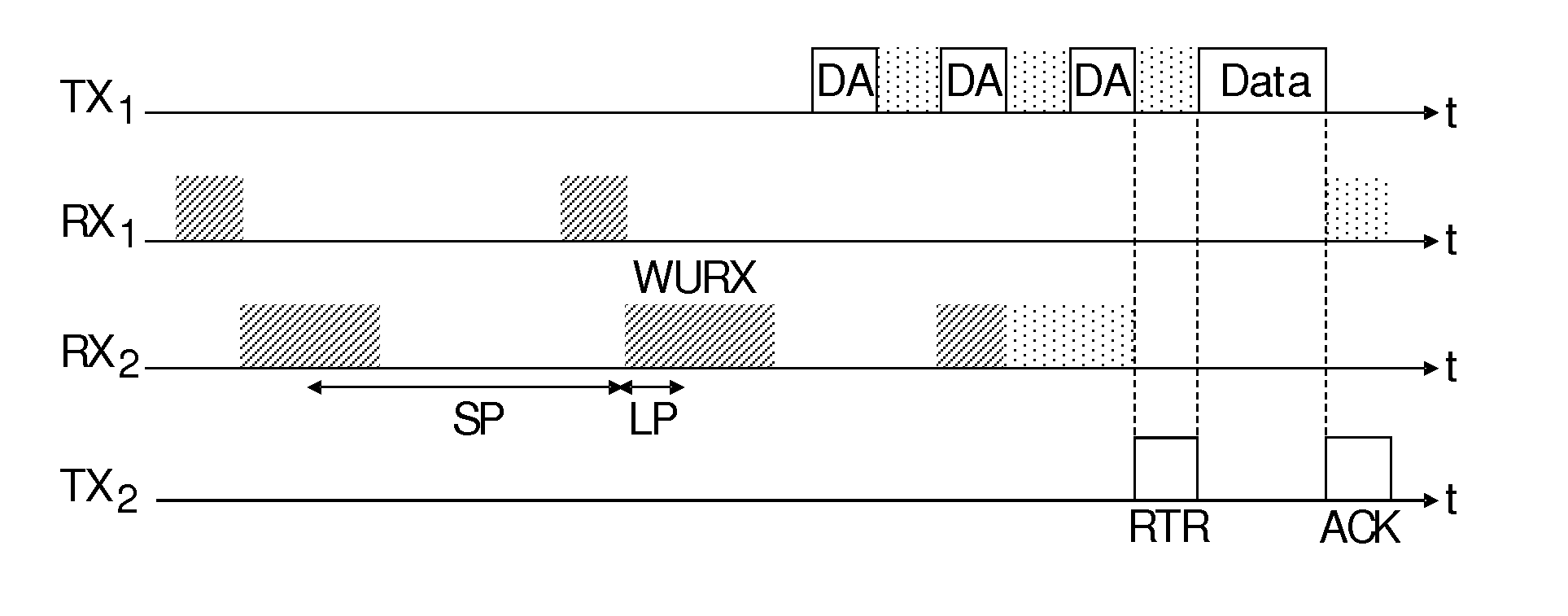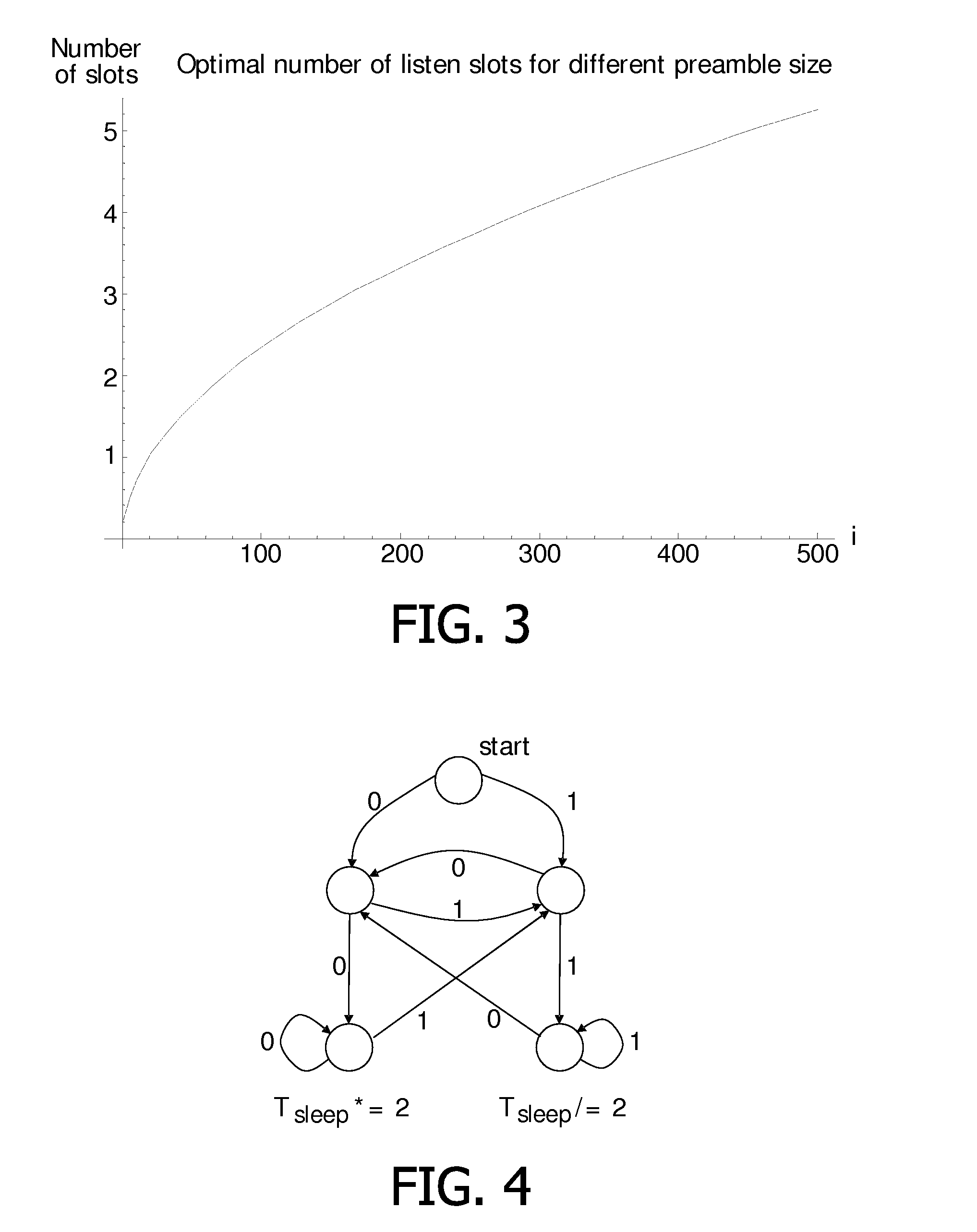Energy efficient transmission in a network
a network and energy-efficient technology, applied in data switching networks, power management, high-level techniques, etc., can solve the problems of not being able to properly synchronize the whole network, affecting the efficiency of network transmission, so as to achieve less energy-consumption
- Summary
- Abstract
- Description
- Claims
- Application Information
AI Technical Summary
Benefits of technology
Problems solved by technology
Method used
Image
Examples
Embodiment Construction
[0042]The present invention relates to a method for data packet transmission in a network comprising several communication devices, called nodes in this description. In a particular embodiment, these nodes are part of a body-area network using body-coupled communication, thus the nodes may be worn on a user's body. A BCC network often comprises nodes that are either worn by the user on his body or touched by the user, generally for a short time. The number of nodes that are part of the network may therefore be small, for example around ten. Moreover, the topology of such a network, i.e. the number of nodes in the network and their emplacement, is highly dynamic. Indeed, if a user wears an identifier in order to be identified at a door, the network is composed of a single node most of the day and of two nodes for very short period of time. Another example could be a user wearing many BCC-enabled multimedia devices which continuously guard themselves against theft. In that case the us...
PUM
 Login to View More
Login to View More Abstract
Description
Claims
Application Information
 Login to View More
Login to View More - R&D
- Intellectual Property
- Life Sciences
- Materials
- Tech Scout
- Unparalleled Data Quality
- Higher Quality Content
- 60% Fewer Hallucinations
Browse by: Latest US Patents, China's latest patents, Technical Efficacy Thesaurus, Application Domain, Technology Topic, Popular Technical Reports.
© 2025 PatSnap. All rights reserved.Legal|Privacy policy|Modern Slavery Act Transparency Statement|Sitemap|About US| Contact US: help@patsnap.com



